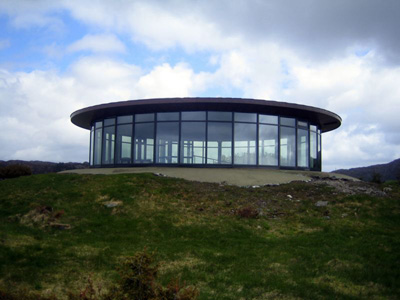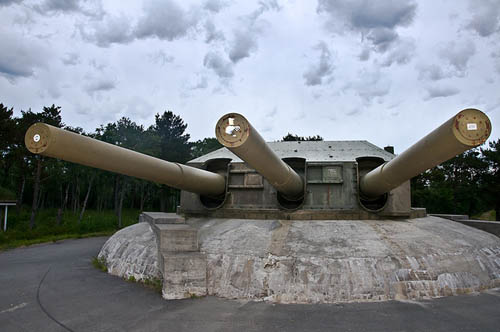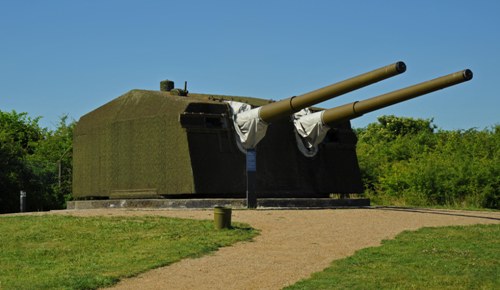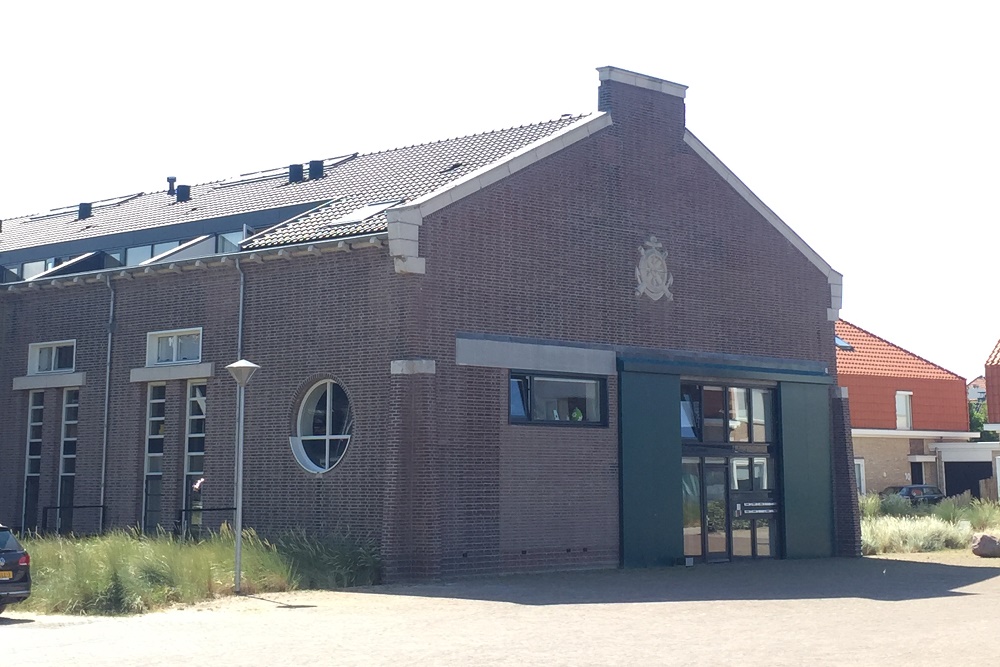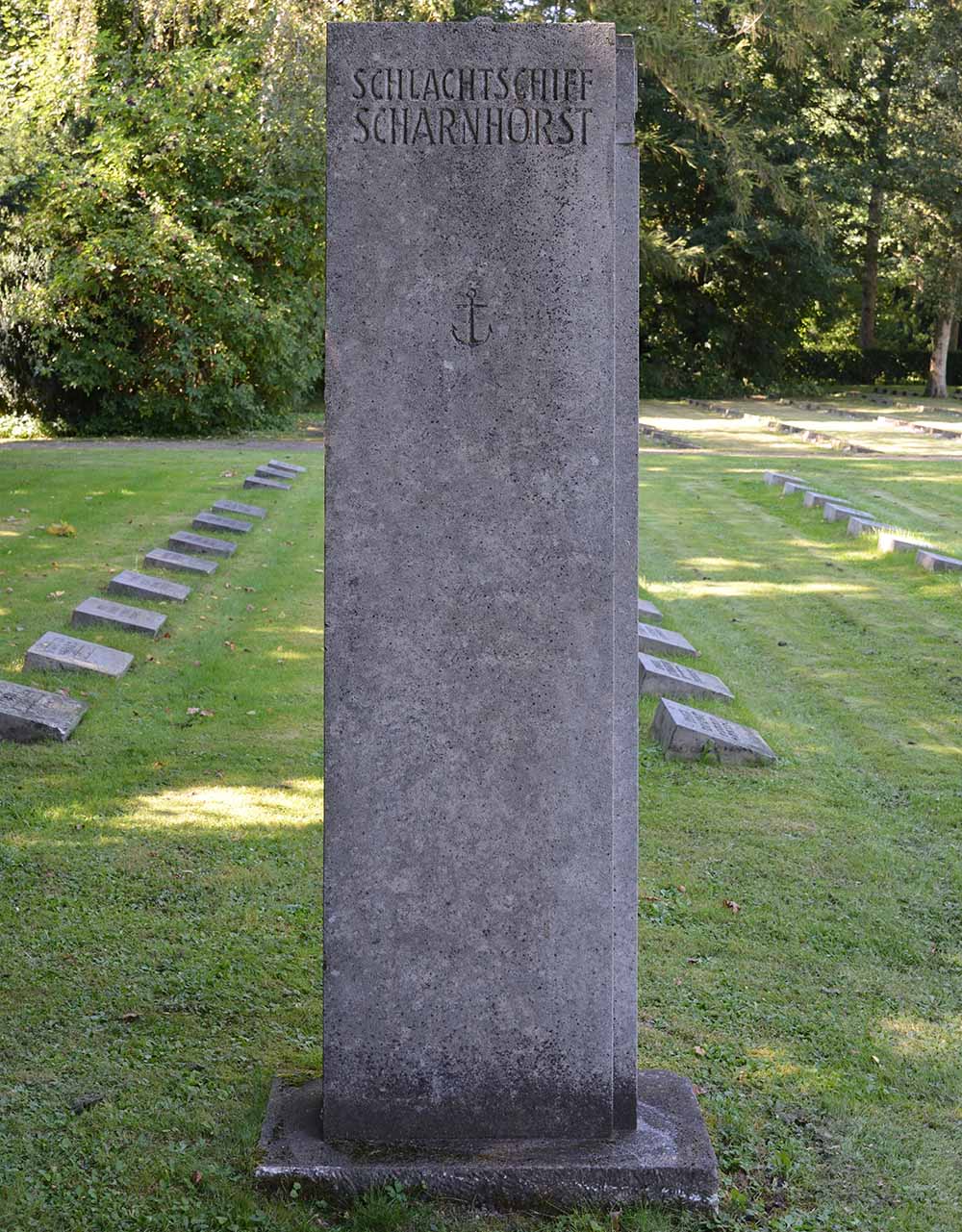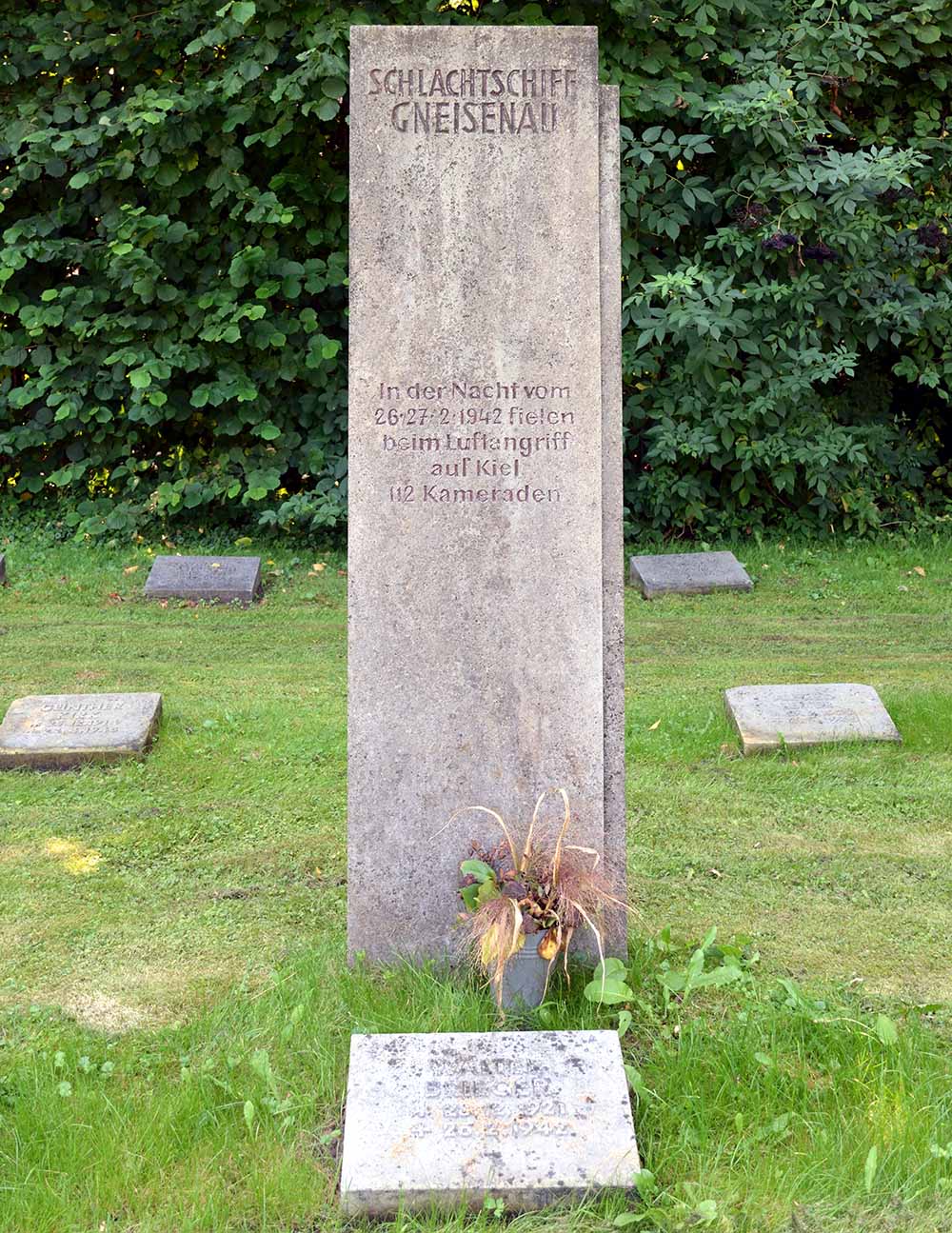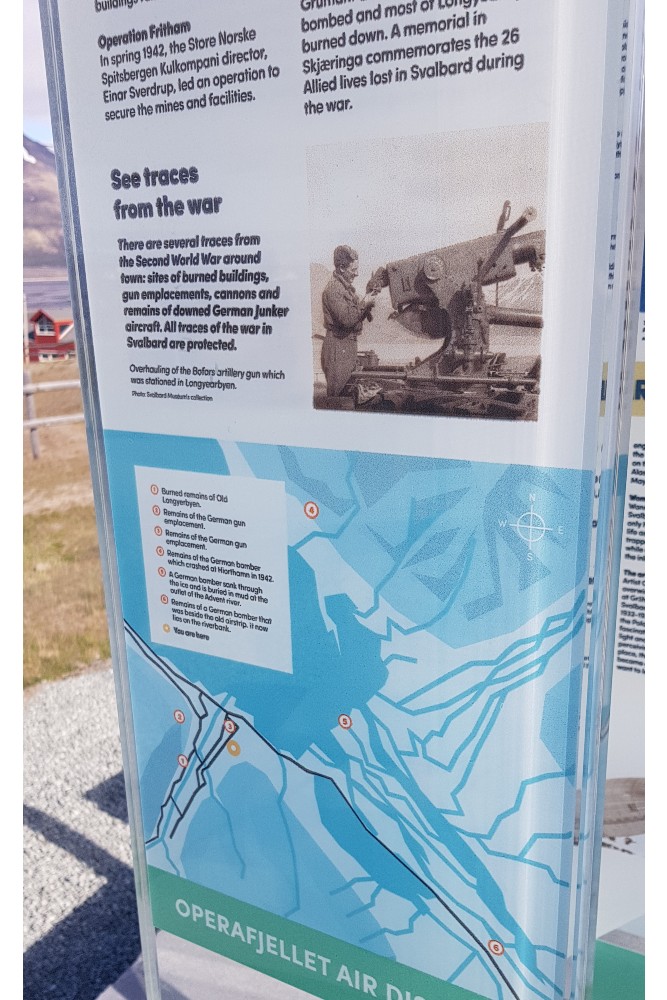Introduction
After the First World War, the German navy was reduced considerably. The only vessels the Germans were permitted to retain were six old battleships from the period before the dreadnoughts, six old light cruisers and 24 destroyers. During the First World War, these vessels were already outdated and so, after the war new vessels had to be constructed. There was little money available to construct vessels however as Germany had to make many reparation payments. The Allies had also set limits to the new vessels to be constructed: displacement wasn't to exceed 10,000 BRT and main armament was limited to 28cm.
In the early 30s, the so-called Panzerschiffe or armored vessels of the Deutschland class were constructed. These vessels fell within the limits of the Treaty of Versailles with their main armament of six 28cm guns. Afterwards, various plans were drafted for their successors. These vessels could for instance be equipped with a somewhat heavier main armament such as 30cm guns. The designers however were not permitted to enlarge the size of the vessels so these vessels would probably be equal to those of the Deutschland class.
In a future war, the opponents would probably be the French. They had just started the construction of two new battlecruisers, the Dunkerque and the Strasbourg. The Germans therefore wanted Scharnhorst and Gneisenau to be stronger than those.
After the Allies had permitted the construction of larger vessels, real development of the Scharnhorst class could begin. A main armament of 28cm guns was selected, enabling a heavier armor for the vessels. The Germans officially called these vessels Schlagkreuzers. They had the armor of a battleship and the speed and main armament of a battlecruiser. Therefore the British in particular called them battlecruisers.
After commission, both vessels had a straight bow. Shortly afterwards however those were converted to 'clipper bows' or 'Atlantic' bows as the vessels took on too much water when sailing at high speed. The position of the anchors was also changed and the horizontal tops of the funnels were slanted.
Scharnhorst and Gneisenau turned out to be good ships. They were the only battleships that had sunk an active aircraft carrier with gunfire. They carried out most operations together and sunk a total of 22 merchantmen and 4 warships totaling 155,587 BRT.
Scharnhorst was sunk in December 1943. Between April 1942 and 1943, Gneisenau was in dock to be converted and was scuttled in Gotenhafen as a blockade vessel on March 28, 1945.
Technical data
| Class: | Scharnhorst | |
| In class: | 2 | |
| Type: | Battleship | |
| Vessel: | Scharnhorst | Gneisenau |
Built by| Reichsmarinewerft Wilhelmshafen | Deutsche Werke AG Kiel | |
| Ordered: | Jan 25, 1934 | id |
| Laid down: | Feb 14, 1934 | id |
| Launched: | Oct 3, 1936 | Dec 8, 1936 |
| Commissioned: | Jan 07, 1939 | May 21, 1938 |
| Sunk: | 10 vessels, + 1 Gneis | 15 + 1 Schar |
| Demise: | Sunk Dec 26, 1943 | Scuttled March 28, 1945 |
| Cost: | RM 143,471,000 | RM 146,174,000 |
| Crew: | 1669-1968 | 1669-1840 |
| Power output: | 161,764hp | 153,897 |
| Speed max: | 31,65 knots | 30.7 |
| Range: | 9,020 miles at 15 knots | 8,380 at 15 |
Data of both vessels:
- Length overall: 754ft
- L waterline: 741ft
- Beam: 97ft
- Draught: loaded 32ft
- Displacement: 34,850 BRT; loaded 38,900
- Propulsion:
- Propellors 3
- Steam turbines Scharnhorst 3 Brown Boveri;
- Steam turbines Gneisenau Deschmag
- Engine 2 MAN 10 cylinder four-stroke Diesel
- Belt armor 300 - 350mm
- Deck 80 - 95mm
- Turret 300- 360mm
- Command tower max 350mm
- Guns 28cm 9 SK L/51 C/34 in 3 triple turrets
- Guns 15cm 12 SK L/55 C/28 6 twin turrets
- Guns 10,5cm 14 SK L62 C/33 7 twin turrets
- AA 3,7cm 16 SK L/83 8 twin turrets
- AA 2cm 10 - 38 SK MG L/64
- Torpedoes 6 53.3cm in 3 twin tubes
- Aircraft 3 Arado Ar-196
- Catapult 1
Definitielijst
- battleship
- Heavily armoured warship with very heavy artillery.
- First World War
- Took place from 1914 till 1918 and is also named The Great War. The conflict started because of increased nationalism, militarism and neo-colonialism in Europe. Two alliances battled one another during the 4-year war, which after a dynamic start, resulted into static trench warfare. The belligerents were the Triple Alliance (consisting of Great-Britain, France, and Russia; later enlarged by Italy and the USA, amongst others) on the one hand and the Central Powers (consisting of Germany, Austria-Hungary, Bulgaria and the Ottoman empire) on the other hand. The war was characterized by the huge number of casualties and the use of many new weapons (flamethrowers, aircraft, poison gas, tanks). The war ended in 1918 when Germany and its allies surrendered unconditionally.
Scharnhorst
This vessel was named after the Prussian general Gerhard Johann David von Scharnhorst (1755-1813). Her keel, (Panzerschiff D, Ersatz Elsaß) was laid on February 14, 1934. On July 5, construction was aborted and the material used was torn down as the building plans had been changed. The keel was re-laid on June 15, 1935 and she was commissioned on January 7, 1939. Between July and August 1939, she was in dock for adaptations to her bow.
On November 21, she and Gneisenau were sent out to attack merchantmen south of Iceland. Two days later they sank the British auxiliary cruiser HMS Rawalpindi. Shortly afterwards, Gneisenau was damaged in a severe storm and therefore, both vessels returned to Kiel. Both vessels, along with the heavy cruiser Admiral Hipper and three destroyers were sent out to carry out Operation Nordmark in February 1940. They were to attack British convoys between Bergen and Great Britain but no ships were spotted.
During Operation Juno, she carried out operations in the Polar Sea together with Gneisenau, the heavy cruiser Admiral Hipper and four destroyers. June 8, 1940, Scharnhorst and Gneisenau got into battle with the British carrier HMS Glorious and the destroyers HMS Ardent and Acasta. All British vessels were sunk. Scharnhorst was struck by a torpedo from HMS Acasta and had to set sail for Kiel to be repaired.
In Operation Berlin, she and Gneisenau broke out into the Atlantic. After having sunk a total of 22 vessels (She 8, Gneisenau 13 and 1 together), both vessels returned to Brest. There, Scharnhorst was badly damaged by British air attacks. In February 1942, she and Gneisenau, along with the heavy cruiser Prinz Eugen, six destroyers, fourteen torpedo vessel and ten MTBs, carried out Operation Cerberus. They were to escape from France through the English Channell to Germany. This operation was successful although Scharnhorst struck two mines. She arrived in Wilhelmshafen on the 13th.
She was repaired in Kiel from February 1942 to January 1943. Shortly after, she, Prinz Eugen and three destroyers set sail to Norway during Operation Fronttheater. Owing to the threat of aerial attacks, they returned to Gotenhafen. Shortly afterwards she, Prinz Eugen and two destroyers tried again in Operation Domino Because of supplies failing, the vessels returned to port. In March, she and three destroyers tried once more in Operation Paderborn. This time they were successful.
In September 1943, Scharnhorst, the battlecruiser Tirpitz and nine destroyers launched an attack on a base on Spitzbergen, Operation Sizilien. On December 25, 1943, she and five destroyers commanded by Konteradmiral Bey, left port in search of Convoy JW-55B on its way to Murmansk. The destroyers left Scharnhorst behind, looking for the convoy. Shortly after, Scharnhorst was spotted by British cruisers. They directed battleship HMS Duke of York to the German vessel. HMS Duke of York opened fire. The German vessel was faster though and steamed away from the British vessel. The trajectory of the latter's shells became gradually steeper and hence more dangerous. Scharnhorst was hit and lost speed. HMS Duke of York, the heavy cruiser HMS Norfolk, the light cruisers HMS Belfast and Jamaica closed in on the German vessel. Next morning, she was sunk by gunfire from HMS Duke of York and shells and torpedoes from HMS Jamaica. Out of the 1,968 crew members of the German vessel, only 36 survived. The Battle of the North Cape was the last in open sea in which large warships exchanged gunfire.
Definitielijst
- battleship
- Heavily armoured warship with very heavy artillery.
- cruiser
- A fast warship with 8,000 – 15,000 ton displacement, capable to perform multiple tasks such as reconnaissance, anti-aircraft defence and convoy protection.
- Panzerschiff
- Designation for a type of armoured warship of the German Navy which formally met conditions, for example water displacement, that were imposed on Germany after the First World War in 1919 at the Treaty of Versailles. In fact, through applications and the use of new inventions in the field of armour, armouring and propulsion, they had a bigger combat power and deadweight than anyone suspected.
- torpedo
- A weapon of war. A cigar shaped body fitted with explosives and a propulsion and control mechanism. Intended to target after launch a nearby enemy ship and disable it by underwater explosion.
Gneisenau
This vessel was named after the Prussian field marshal August Wilhelm Anton Graf Neidhardt von Gneisenau (1760-1831). Her keel ( Panzerschiff E, Ersatz Hessen) was laid on February 14, 1934. On July 5, construction was aborted and the material used was demolished as the building plans had been changed. The keel was re-laid on May 6, 1935 and Gneisenau was commissioned on May 21, 1938. From May 1939 onwards, she was the flagship of the Kriegsmarine.
On November 21, she and Scharnhorst were sent out to attack merchantmen south of Iceland. Two days later they sank the British auxiliary cruiser HMS Rawalpindi. Shortly afterwards, Gneisenau was damaged in a severe storm and therefore, both vessels returned to Kiel. Both vessels, along with the heavy cruiser Admiral Hipper and three destroyers were then sent out to carry out Operation Nordmark in February 1940. They were to attack British convoys between Bergen and Great Britain but no ships were spotted.
During Operation Weserübung, the invasion of Norway, she was the flagship of Vize-admiral Lütjens. She and Scharnhorst managed to lure the British battleship HMS Renown away from the Norwegian coast where transport vessels were unloading troops. A short firefight ensued in which she was damaged. During Operation Juno, she and Scharnhorst, Admiral Hipper and three destroyers operated in the Polar Sea. June 8, 1940, Scharnhorst and Gneisenau got into battle with the British carrier HMS Glorious and the destroyers HMS Ardent and Acasta. All British vessels were sunk. On June 20, 1940, she and Admiral Hipper left Trondheim. Near the island of Halten, she was struck by a torpedo from the British submarine HMS Clyde.
In Operation Berlin, she and Scharnhorst broke out into the Atlantic. After having sunk a total of 22 vessels (She 13, Scharnhorst 8 and 1 together), both vessels returned to Brest. There, she was badly damaged by British air attacks. In February 1942, she and Scharnhorst, along with the heavy cruiser Prinz Eugen, six destroyers, fourteen torpedo vessel and ten MTBs, carried out Operation Cerberus.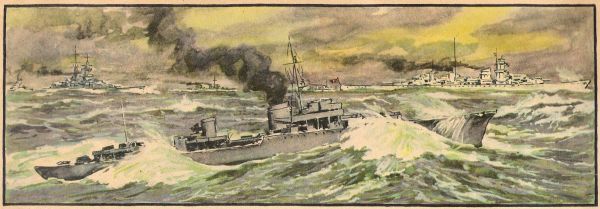
Een propagandaprent van operatie Cerberus, de doorbraak van o.a. de Scharnhorst en de Gneisenau door het Kanaal. Source: Kevin Prenger
They were to escape from France through the English Channell to Germany. This operation was successful although she struck a mine. She arrived in Kiel on the 13th.
During an air attack in the night of February 26 to 27, 1942, she was hit on the foredeck by a large bomb. The entire bow burned out completely. Thereafter she was sent to Gotenhafen to be decommissioned and repaired. She was also to receive a new main armament: The nine 28cm guns in triple turrets were to be replaced by six 38cm gun in three twin turrets. Her earlier guns were put to use in coastal batteries in the Netherlands, Norway and Denmark. After Scharnhorst had been sunk in December 1943, conversion of the vessel was aborted. She was scuttled in Gotenhafen as a blockade vessel. In 1951, the wreck was dismantled by a Polish company.
Definitielijst
- battleship
- Heavily armoured warship with very heavy artillery.
- cruiser
- A fast warship with 8,000 – 15,000 ton displacement, capable to perform multiple tasks such as reconnaissance, anti-aircraft defence and convoy protection.
- invasion
- Armed incursion.
- Kriegsmarine
- Germa navy. Part of the Wehrmacht next to Heer and Luftwaffe.
- marshal
- Highest military rank, Army commander.
- mine
- An object filled with explosives, equipped with detonator which is activated by either remote control or by colliding with the targeted object. Mines are intended to destroy of damage vehicles, aircrafts or vessels, or to injure, kill or otherwise putting staff out of action. It is also possible to deny enemy access of a specific area by laying mines.
- Panzerschiff
- Designation for a type of armoured warship of the German Navy which formally met conditions, for example water displacement, that were imposed on Germany after the First World War in 1919 at the Treaty of Versailles. In fact, through applications and the use of new inventions in the field of armour, armouring and propulsion, they had a bigger combat power and deadweight than anyone suspected.
- torpedo
- A weapon of war. A cigar shaped body fitted with explosives and a propulsion and control mechanism. Intended to target after launch a nearby enemy ship and disable it by underwater explosion.
Information
- Article by:
- Auke de Vlieger
- Translated by:
- Arnold Palthe
- Published on:
- 15-09-2023
- Feedback?
- Send it!
Related sights
Related books
Sources
- HUMBLE, R., Duitse Kriegsmarine, Standaard Uitgeverij, Antwerpen, 1991.
- JACKSON, R., The World's Great Battleships, Greenwich Editions, Londen, 2000.
- MCCURTIE, F.E., Jane's Fighting Ships of World War II, Bracken Books, Londen, 1989.
- WORTH, R., Fleets of World War II, Da Capo Press, 2001.
- Duitse slagschepen
- Scharnhorst
- Scharnhorst
- Gneisenau klasse slagschepen
- Duitse pantserschepen onder de B. d. P.
- Duitse slagschepen
- Scharnhorst
- Scharnhorst
- Scharnhorst
- Duitse slagschepen
- Duitse slagschepen
- Duitse oorlogsschepen
- Scharnhorst klasse slagschepen
- Operatie Weserübung
- Operatie Weserübung
- Operatie Weserübung
- Noorwegen 1940
- Duitse Kriegsmarine
- Duitse slagschepen
- Duitse slagschepen
- Scharnhorst
- Franse slagkruisers
- Scharnhorst klasse




